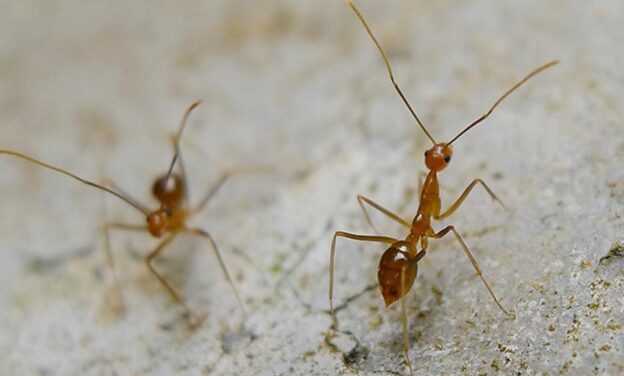The problem with Yellow Crazy Ants
Yellow crazy ants are a type of Tramp Ant that can have a significant impact on native plants and animals, crops, horticulture, and honeybee hives.
These ants have an erratic walking style with frantic movements, which are exacerbated when the ants are disturbed. Yellow crazy ants can form highly populated super- colonies and if these invasive ants spread, they may adversely affect Australia’s outdoor lifestyle.
Yellow Crazy Ants fall into the restricted category 3, under the Biosecurity Act 2014 and must not be given away, sold or released into the environment. As with all restricted pests, everyone is required to meet their General Biosecurity Obligation and take all reasonable and practical steps to minimise the risks associated with this pest.
You will generally find Yellow Crazy Ant nests in areas where there is access to moisture or water, including along creek banks, in the vicinity of marinas and harbours, in service pits, under logs and leaf litter, and at the base of trees. When travelling along coastal areas, on the water, or to the islands, it is imperative you regularly inspect your car, vessel, luggage, food and equipment for Yellow Crazy Ants and their eggs, in order to ensure that these pests are not being spread.
If you think you have found an infestation of Yellow Crazy Ants, it is imperative that you contact Biosecurity Queensland on 13 25 23 as soon as possible.
Reference
- Department of Agriculture and Fisheries, Yellow Crazy Ant fact sheet
